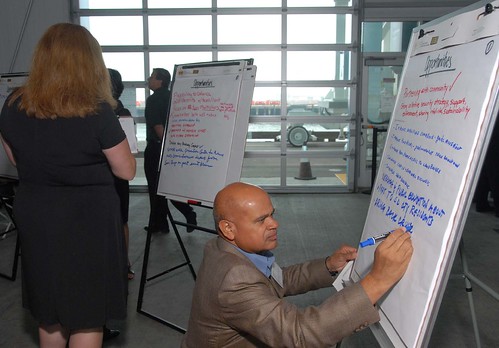When writing copy for businesses, it can be difficult to get everyone to agree on what is ‘right’. As a copywriter, your words may be reviewed by several stakeholders, all with slightly different ideas of how their company communicates.
Copywriters can either muddle on, hoping to assuage multiple stakeholders and get their copy signed off after a bit of a slog, or you can unify your reviewers by getting them to agree a canonical tone of voice for their brand.
Bring together representatives from every department and get them talking about brand language. Get them to share their view of the company’s voice. And then write it all down, and get them to sign it off.
A short workshop can be enough to make everyone feel heard, and can be enough to produce a tone of voice document that everyone can agree to. Once the tone of voice is in black and white, and no longer an ephemeral mish-mash of beliefs, you can get writing. Not only will you encounter less resistance from your reviewers, but you will also have a framework to fall back on, should anyone challenge or question your copy.
Indeed, you’ll no longer be arguing about the tone of voice, though you may find yourself discussing whether your copy is in keeping with the documented brand voice – which is a far easier conversation to have!
When to use brand language or tone of voice workshops
Not every business needs to run a workshop. For small clients and startups it’s often quicker and easier (and cheaper for the client) to decide a tone of voice by simply talking about it.
However, brand language or tone of voice workshops are great for…
Companies that have grown
Many of my clients need help because they’ve grown from a small company doing one thing to a larger company doing several things, and during that growth they lose the ability to clearly explain what they do. Different ideas about the business compete for prominence, and often it’s easier for an external agency to bring some clarity.
Companies with several strong departments
Copy can easily become the battleground for corporate turf wars. Warring factions fight for control of areas of strategic importance (like the home page). Engender a spirit of cooperation and peace by bringing the warmongers together, and getting them to play nice.
If you’re interested to know how a brand language workshop could help your organisation speak with a clear, consistent voice, get in touch!













